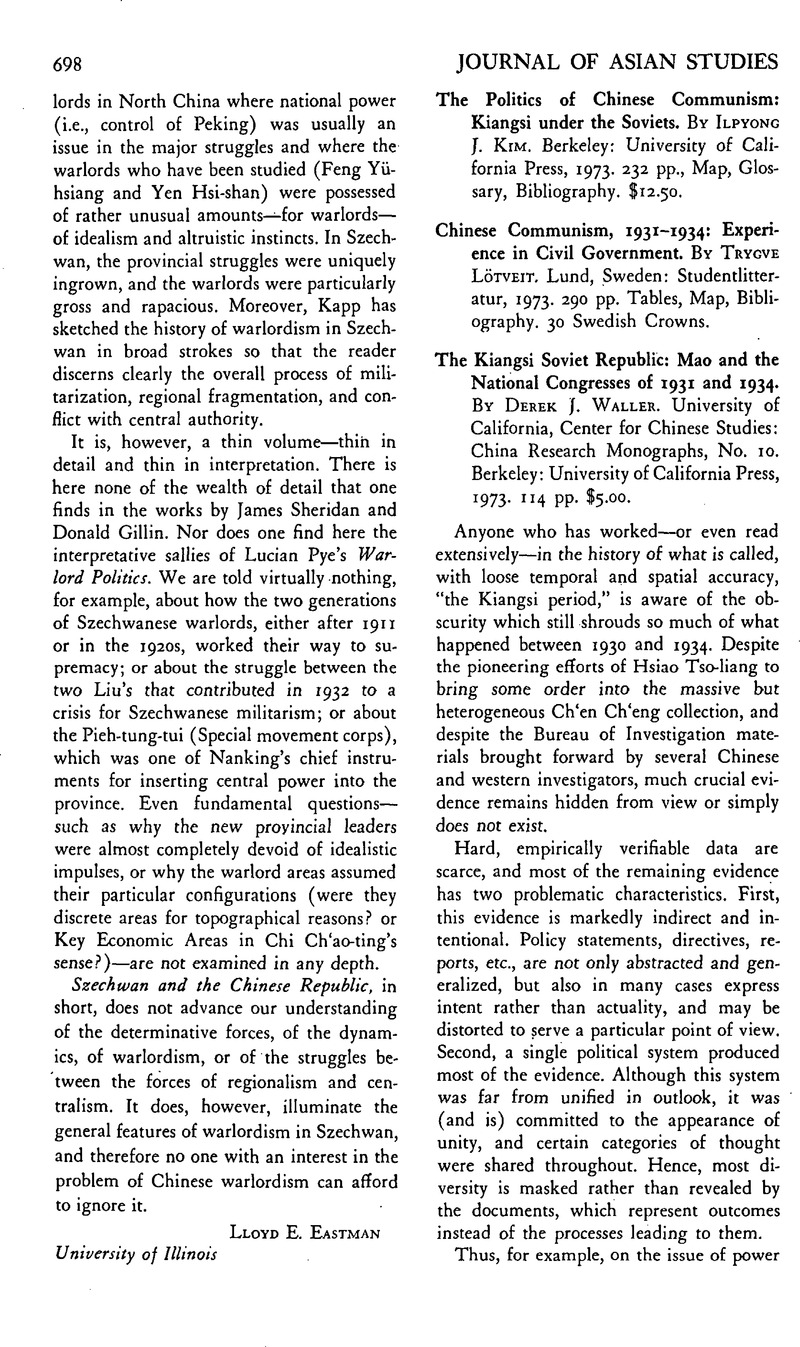No CrossRef data available.
Published online by Cambridge University Press: 23 March 2011

1 The map on p. 33, which carries no indication of source or other comment, raises many questions. The number and names of the soviet areas in the text (p. 3a) differ from those of the map. The Hsiang-O-hsi (West Hunan-Hupei) Soviet Area is depicted as wholly within Szechwan, quite a distance from the borders of Hunan and Hupei; the Min-Che-Kan (Fukien-Chekiang-Kiangsi) Soviet Area is shown as containing no part of, nor even adjacent to, Fukien.
The data on the cooperative movement (pp. 144–149) are meaningless without scale or context. No quantity is large (or small) in absolute terms, but only with respect to some other comparable quantity. Kim apparently uses the data both ways: large, as an illustration of the “intensity of the organizational drive,” and small because “the population remained passive, if not openly hostile toward the mobilization effort of the soviet government.” (p. 149).
The population data on pp. 174–175 are neither questioned nor exploited for the inferences they might yield. As given, they are internally inconsistent: the subtotals do not equal the total, and the percentage of the population serving with the Red Army, given as 12%, is actually 17.9% (320 of 1,784).
The bibliography lists several sources twice, and omits some items cited in the text. There are also very numerous errors and inconsistencies in the romanization of Chinese names, terms, and titles.
2 “Early Communist Land Reform and the Kiangsi Rural Economy,” Modern Asian Studies, IV:2 (April 1970), 165–169.Google Scholar